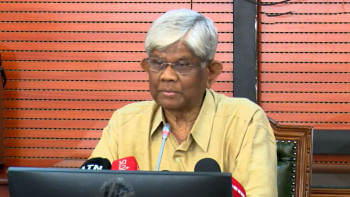Paper dragons, haunted theaters, one very large cicada: An introduction to SCPs

One of the weirder relics of my early days on the internet—one that I'm certain many if not most of my fellow netizens around my age are quite familiar with—is Creepypasta: a type of horror story born in and propagated through internet forums and social media, originally in the form of blocks of copied-and-pasted text, then through memes and references, and eventually through other forms of media such as videogames, video essays, and more. Back in the early-to-mid 2010s, creepypastas were everywhere on the internet. In "Backrooms" memes, Slenderman games, random 'Jeff The Killer' jumpscares, and more, creepypastas became a pillar of modern internet-based media as a whole. Despite their sheer cultural impact, most creepypastas were neither particularly well-written nor much more than simple scary stories, and their general tone and content were not all that diverse.
Then, sometime in 2019, I found something that fit that "internet-based text story that branches into other stuff" niche for me in a way creepypastas were never able to: SCPs. SCP is the term used to refer to anomalous entities, objects, and phenomena within the shared fictional universe of The SCP Foundation—a universe populated with a staggering number of incredibly diverse stories written by people from all over the world. These stories are written in the format of classified reports as part of this fictional Foundation's enormous database of anomalies to be contained, studied, and hidden from the public and range from standard horror pieces to fantasy fics to sci-fi jaunts of multivarious scope, and so much more.
The SCP Foundation (or simply "The Foundation" as it is generally referred to in-universe) itself is a clandestine global organisation working to contain anomalous entities and phenomena. Within the universe's branching canon(s), the Foundation is responsible for protecting the public from said anomalies by containing and studying them, and preventing people from learning about their existence. Their 'About' page on the wiki opens with a message from the in-universe character, The Administrator, stating "While the rest of mankind dwells in the light, we must stand in the darkness to fight it, contain it, and shield it from the eyes of the public, so that others may live in a sane and normal world."
Each anomaly within the universe is assigned a number and filed as an SCP (if you're wondering: there's no single official full form for the abbreviation, but in a number of SCP entries, the term stands of Secure Containment Protocol), and these reports become what we readers—researchers digging through Foundation databases—get to see.
If you've read this far and are interested in experiencing it all for yourself, here's a few tips on where to go and how you might start. If you'd like to go directly to the wiki and just start reading (which I honestly recommend! Part of why SCPs and this style of online media are so compelling and accessible is how easy and fun it is to just dive in headfirst and see how that goes), I suggest checking out their guide for newcomers on the site first so you don't feel immediately lost or overwhelmed.
Additionally, if you're unsure which SCP to start with—especially because the entries are listed as numbers rather than names—the wiki has a very helpful 'Guide For Reading' that also links to several curated recommendation lists. For the more visually inclined, there are also several SCP Youtube creators who make content based on SCPs and the universe ranging from readings with accompanying graphics and voice acting to deep dive video essays.
Last but not least, here are some recommendations from me:
To cite some that are mostly horror based: While, unlike Creepypasta, SCPs are not all horror stories, there are still a massive number of them on the site. Some of the best and post popular classic SCPs are horror-themed—SCPs 096, 682, and 106 are all classic "monsters", SCPs 140, 354, 087, and 701 are all scary objects or places, and SCPs 610 and 231 are more on the disturbing/disgusting side. More modern entries from after "Series I" (the first 1000) have a lot more to offer in terms of diversity of concept and content. Some of my favorite horror pieces from these later entries are SCPs 3199, 3456, 6373, 3935, 5999, (content warning for all of the following ones—they are all quite disturbing and/or disgusting) 3288, and 3084.
Ones that are not strictly horror but personal favourites: SCP 3004 is a very conceptually cool anomaly with a lot of religious symbolism; SCP 507 is a normal guy with an unfortunate "superpower"; SCP 093 is a mysterious red disc that transports people to alternate dimensions, seemingly based on regrets carried by whoever holds it; SCP 049 is a plague doctor trying to cure a mysterious disease he calls The Pestilence; SCP 426 is a sentient toaster (I told you the topics were diverse); SCP 1762 is a box of paper dragons (and it's an emotionally devastating read); SCP 1461 is an anomaly similar to and inspired by Mark Z. Danielewski's House of Leaves, SCP 3426, is a fantastically-written sci-fi anomaly that causes the end of sufficiently developed planetary civilisations, and, last but not the least, SCP 7034 is an endless highway and the harrowing account of one man trying to get back home to his family.
All in all, if you like collective fictional universes, interesting and compelling concepts, and reading a wide range of contemporary writers' work, SCPs are absolutely for you. So jump on in, have fun, and if you like any ones not mentioned here: tell me about them, I'm always looking for more.
Arwin Shams Siddiquee is a person-in-progress whose interests include art in all its forms and trying to understand the world and its people better. Tell them about your own journey towards personhood at [email protected].

 For all latest news, follow The Daily Star's Google News channel.
For all latest news, follow The Daily Star's Google News channel. 







Comments